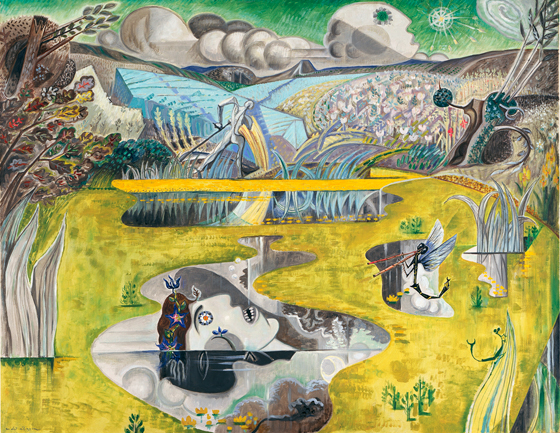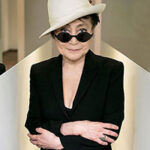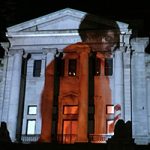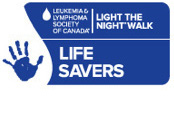This week, I visited the Vancouver Art Gallery’s The Colour of My Dreams exhibit. Throughout the ground floor exhibition, rooms are divided into various themes, holding a total of 350 works, making this the largest and most comprehensive Surrealism show ever mounted in Canada!
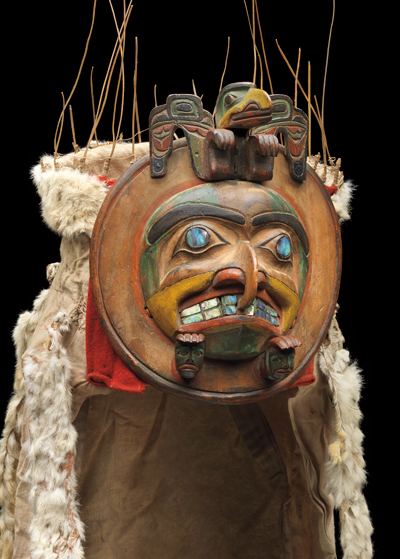
[Peace dance headdress. Photo: Trevor Mills, Vancouver Art Gallery]
I found it interesting that First Nations works Kwakwaka’Wakw’s Yakantakw (“Speaking Through the Post”) and “Yaxwine” (Peace Dance headdress) were included in this show. There’s evidently a Surrealist connection to indigenous peoples.
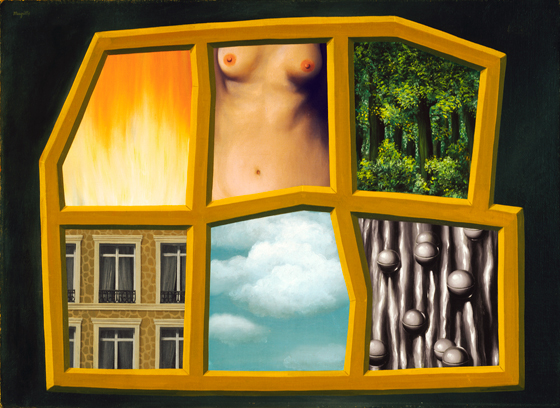
[René Magritte, The Six Elements. © Estate of René Magritte]
Not only are the classic Surrealist paintings on display, but gelatin silver prints of 1920’s Paris (Eugène Atget), sketches created with conté crayon on paper (André Breton, Giorgio de Chirico), and even oil and cord on canvas (Jean Arp’s Two Heads) form part of the eclectic assortment.
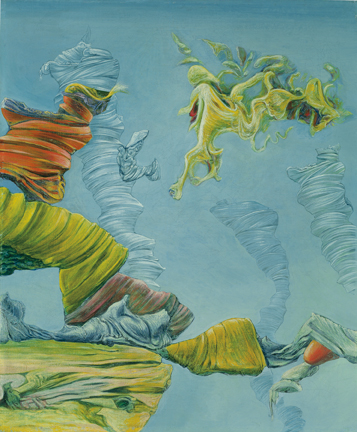
[Kurt Seligmann, Melusine and The Great Transparents. © 2011 Orange County Citizens Foundation]
Surrealism was founded in 1924 and was marked by three events in Paris:
– André Breton’s publication of Manifesto of Surrealism
– La Révolution surréaliste (The Surrealist Revolution, published up until 1929)
– The opening of the Bureau of Surrealist Research, headed by Antonin Artaud
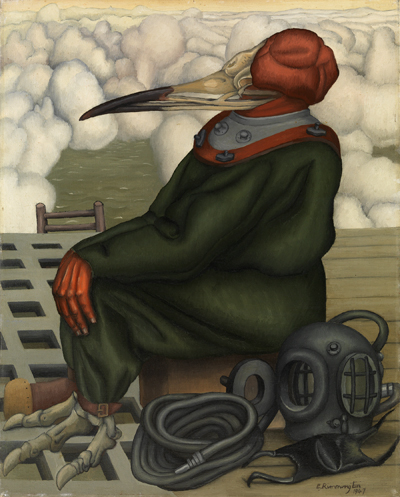
[Edith Rimmington, The Oneiroscopist. © The Israel Museum, Jerusalem]
It later spread throughout Europe, England, and to the Americas.
“Transform the World – Change Life”
From the Dada movement of the preceding decade, Surrealism inherited the same nonconformist attitudes but replaced Dada’s nihilistic spirit with an open and highly experimental attitude. The Surrealists conveyed their commitment to social, political, and psychological transformation in their work.
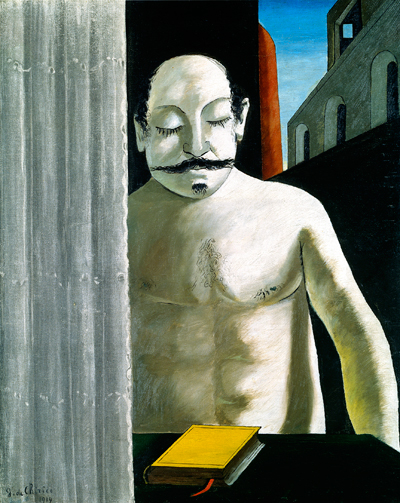
[Giorgio de Chirico, Le cerveau de l’enfant. © Estate of Giorgio de Chirico]
Giorgio de Chirico once admitted to André Breton that “Le cerveau de l’enfant” depicted a character that haunted him: a combination of his father and Napoleon III.
Film was expensive during the Surrealism period; artists had limited opportunities to make their own films. At the VAG, a rotating series features shorts by Gérard Chapdelaine, Henri Storck, Pierre Prévert and Dave Fleischer, ranging in time from 1931-1961. The big filmmakers of the period were Luis Buñuel and Jan Ŝvankmajer. Man Ray, Joseph Cornell, and Wilhelm Freddie also made occasional forays into the cinema world.
Automatism is the practice of accessing transitional zones between dreaming and waking, the conscious and the unconscious, the real and the imaginary. This theme played prominently in Surrealism.
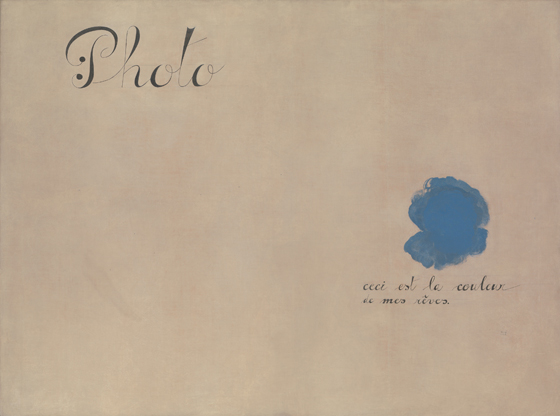
[Joan Miró, Ceci est la couleur de mes rêves. © Successió Miró]
The exhibition’s title is taken from Joan Miró’s 1925 oil on canvas, “Ceci est la couleur de mes Rêves“. The Surrealists viewed their paintings as a way to resemble dreams.
What I mostly discovered throughout the exhibit’s works were childlike, colourful, experimental and sometimes haunting in nature.
I also enjoyed Belgian Paul Nougé’s six gelatin silver prints (part of a larger series of 19) entitled “La subversion des Images“. Nougés was a poet, theorist, and photographer, who belonged to a small group of Belgian intellectuals and artists that formed a Surrealist circle in Brussels.
By far the longest title in the exhibit goes to Dalí’s 1933 “Gala and the Angelus of Millet Immediately Preceding the Arrival of the Conic Anamorphoses“.
Surrealists were not only preoccupied with sleep, dreams, and the unconscious, but also devised games, such as dessin collectif (collective drawing). The first player made a sketch and briefly showed it to the next player, who then attempted to recreate it from memory. Another game was called cadaver exquis (Exquisite Corpse), a game that produced chance images.
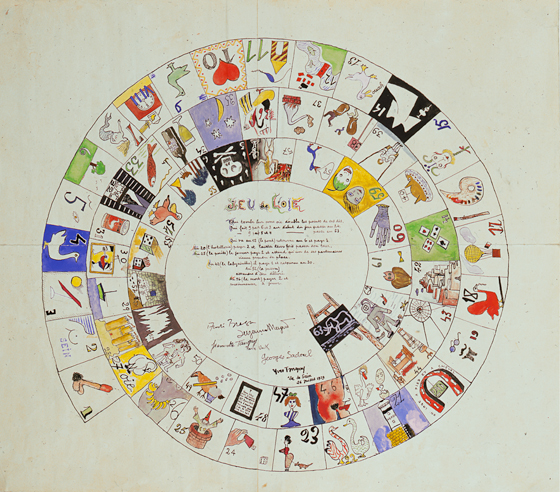
[Le Jeu de L’oie. © Estate of André Breton]
Jeu de L’oie is one such game, based on the Goose Game, a board game originating in the 1500’s. With 63 squares and a spiral layout, it depicted geese and skulls. Breton and his merry group recreated the game using the same two original subjects, adding eroticism and architecture to complete the Surrealist picture.
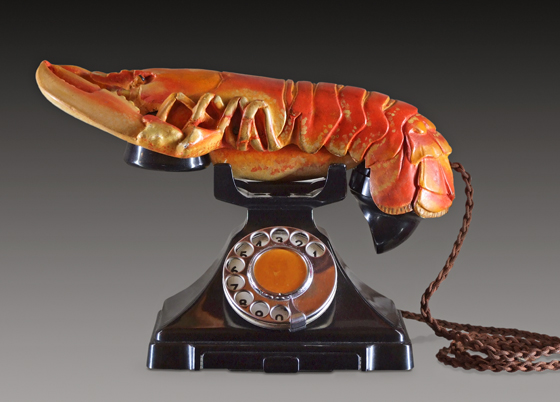
[Salvador Dalí and Edward James, Lobster Telephone. © Salvador Dalí, Fundació Gala-Salvador Dalí]
A highlight of the exhibit’s objects collection is Salvador Dalí and Edward James’s Lobster Telephone. Dalí wrote about the lobster telephone in his book, The Secret Life. In it, he demands to know why, when asked for a grilled lobster in a restaurant, he was never presented with a boiled telephone.
Be prepared for a wild ride. This exhibition will easily fill an afternoon or call for repeat visits.
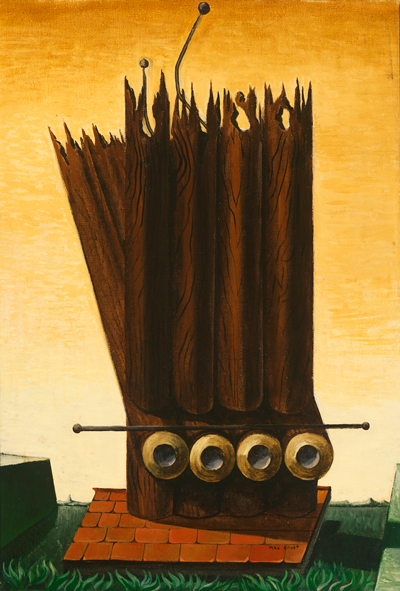
[Max Ernst, The Forest. © Estate of Max Ernst]
The Colour of my Dreams is on at the Vancouver Art Gallery through September 25. Visit the website for opening hours, admission, and other details.
